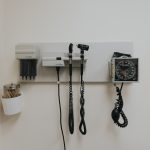Share
Physician Assistants
Go back to MessengerQuick facts about the newest member of Alberta’s regulated healthcare team
On April 1, 2021, Physician Assistants (PAs) will come under CPSA regulation. We’ve supported this move for years and welcome PAs to Alberta’s regulated healthcare team.
PAs are healthcare professionals who have the knowledge, training and skills to provide a broad range of medical services within healthcare teams under the supervision of a physician. First and foremost, the role of PAs is to help and support physicians in caring for a patient population. We understand there may be questions regarding PAs and what this means for physicians. We have answered several of our frequently asked questions below:
How many PAs are practising in Alberta?
We estimate there are 38 practicing physician assistants in Alberta. Once CPSA formally acquires their regulation, all PAs practising in our province will need to formally register with CPSA and begin paying an annual fee, just like physicians.
Are PAs regulated in other Canadian provinces?
According to the Canadian Medical Protective Association (CMPA), as of 2016, about 500 PAs work in Canada, largely in Alberta, Manitoba, Ontario and New Brunswick. Our counterparts in Manitoba and New Brunswick already regulate PAs in their respective provinces.
What is the history of PAs?
While only some provinces have them, PAs have a deeply rooted history in Canada through their work with the Canadian Armed Forces (CAF) since the early 1900s. In fact, the term “physician assistant” was coined and popularized by the CAF in 1984.
What services do PAs provide?
PAs provide medical services under physician supervision. The services they offer depend on the individual PA-physician relationship. Some PAs see and assess patients, take patient histories, perform physical exams, educate patients, perform procedures, assist in surgery and more.
How does the role of physician assistant differ from other healthcare professionals?
This chart helps explain how PAs fit among others who provide similar levels of care:
| Physician Assistant (PA) | Clinical Assistant | Nurse Practitioner (NP) |
|
|
|
More information about physician assistants is available on our website.























Comments for this post are now closed. If you would like to share your feedback on this topic, please email support@cpsa.ca.